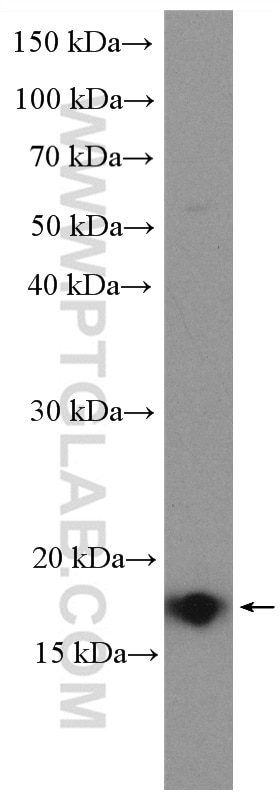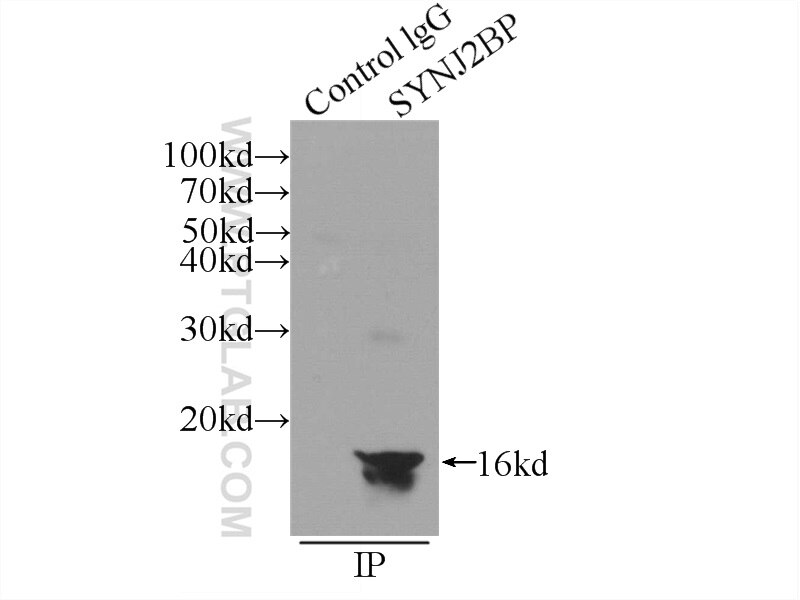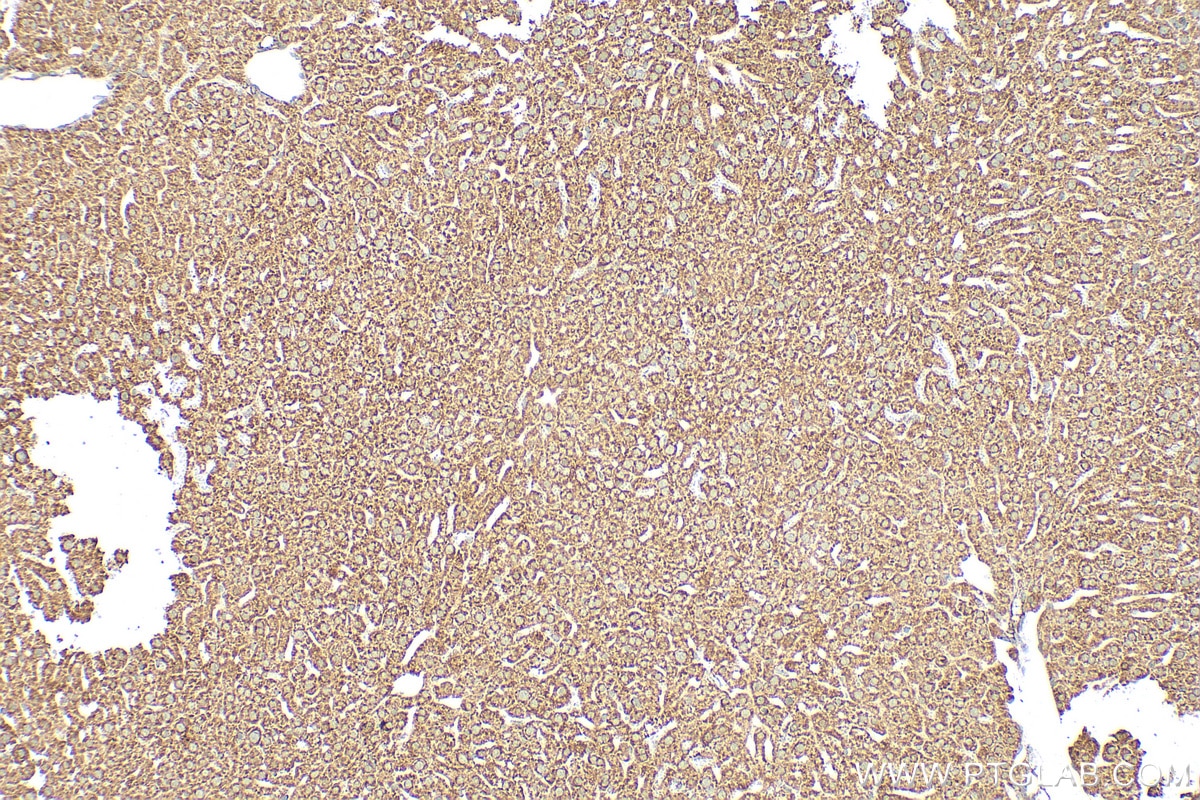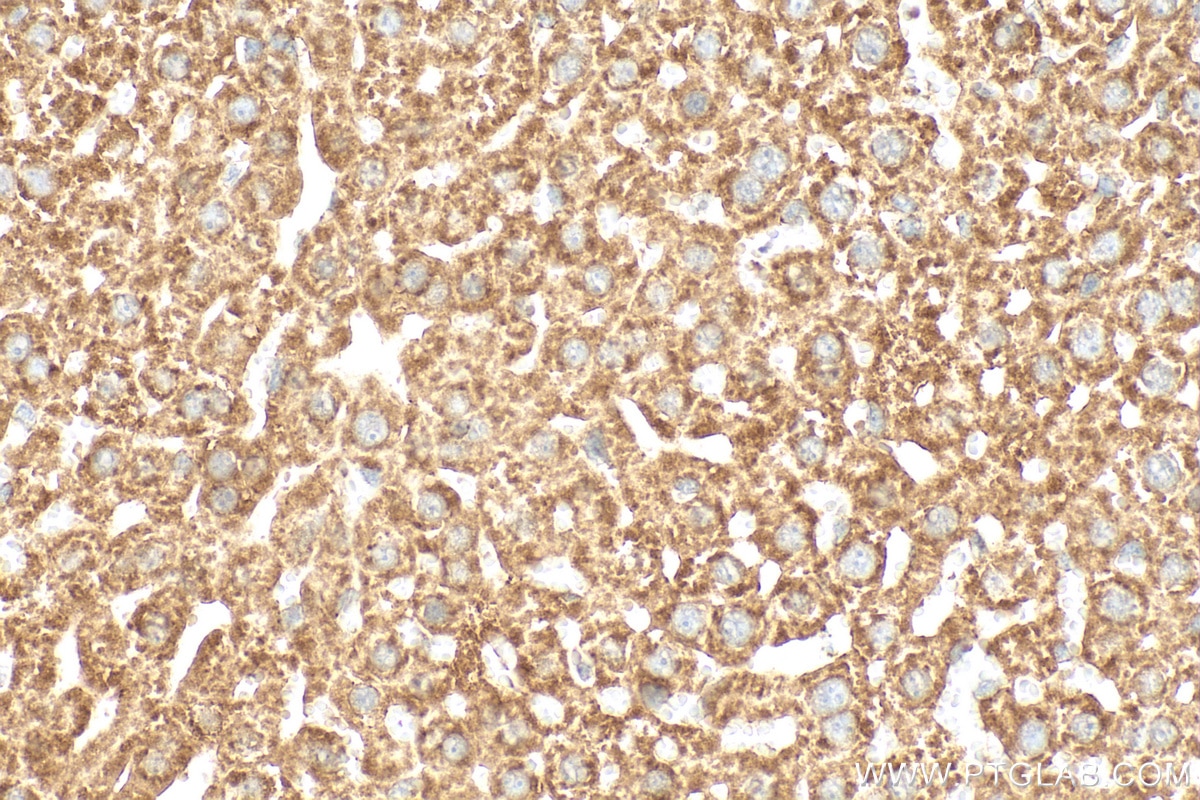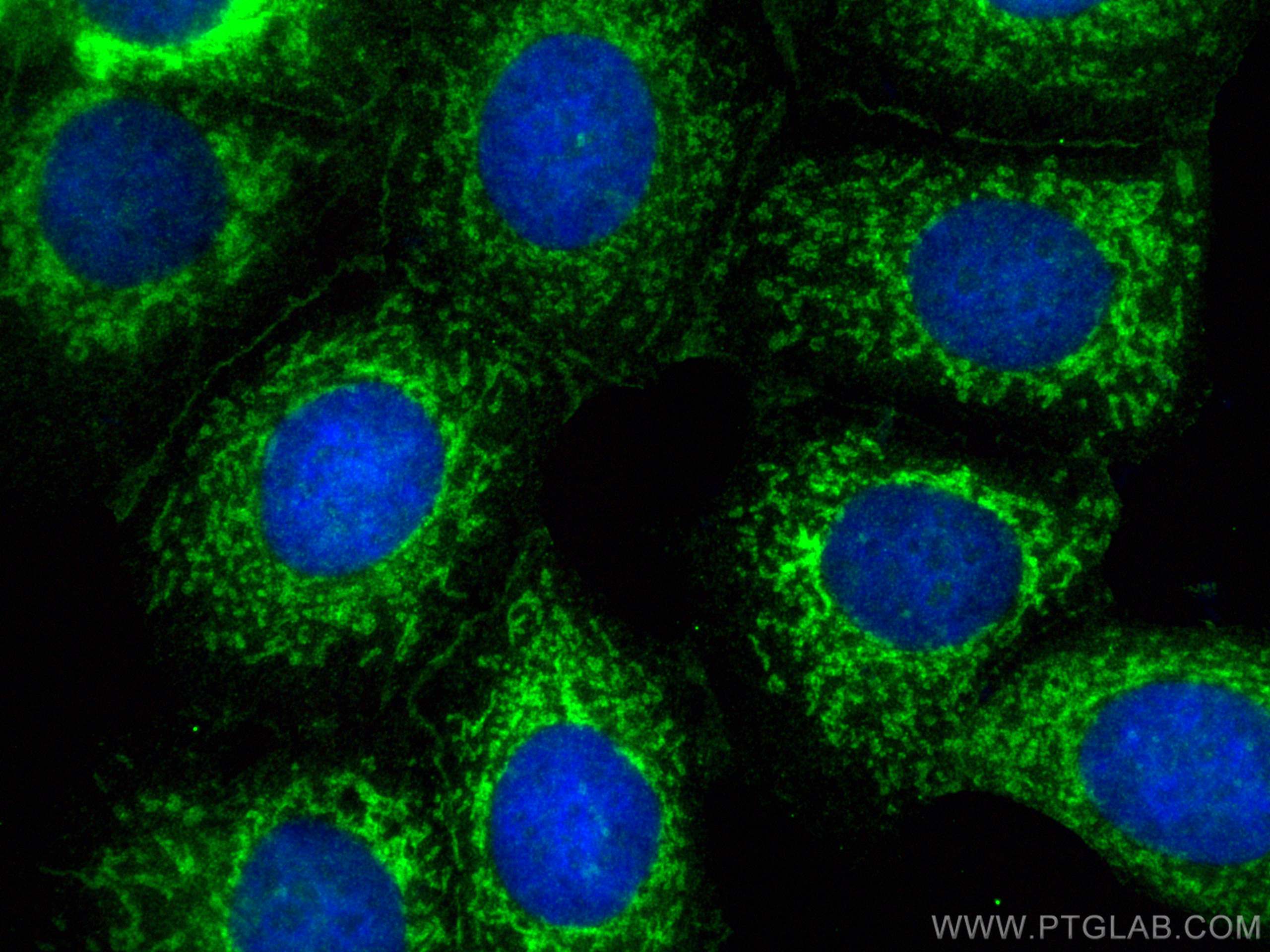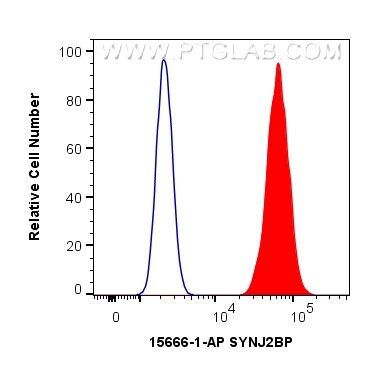Tested Applications
| Positive WB detected in | A549 cells, mouse kidney tissue, mouse lung tissue, rat kidney tissue |
| Positive IP detected in | mouse lung tissue |
| Positive IHC detected in | mouse liver tissue Note: suggested antigen retrieval with TE buffer pH 9.0; (*) Alternatively, antigen retrieval may be performed with citrate buffer pH 6.0 |
| Positive IF/ICC detected in | HepG2 cells, MCF-7 cells |
| Positive FC (Intra) detected in | HepG2 cells |
Recommended dilution
| Application | Dilution |
|---|---|
| Western Blot (WB) | WB : 1:2000-1:10000 |
| Immunoprecipitation (IP) | IP : 0.5-4.0 ug for 1.0-3.0 mg of total protein lysate |
| Immunohistochemistry (IHC) | IHC : 1:200-1:800 |
| Immunofluorescence (IF)/ICC | IF/ICC : 1:200-1:800 |
| Flow Cytometry (FC) (INTRA) | FC (INTRA) : 0.40 ug per 10^6 cells in a 100 µl suspension |
| It is recommended that this reagent should be titrated in each testing system to obtain optimal results. | |
| Sample-dependent, Check data in validation data gallery. | |
Published Applications
| KD/KO | See 1 publications below |
| WB | See 11 publications below |
| IHC | See 3 publications below |
| IF | See 3 publications below |
| IP | See 1 publications below |
| CoIP | See 2 publications below |
Product Information
15666-1-AP targets SYNJ2BP in WB, IHC, IF/ICC, FC (Intra), IP, CoIP, ELISA applications and shows reactivity with human, mouse, rat samples.
| Tested Reactivity | human, mouse, rat |
| Cited Reactivity | human, mouse |
| Host / Isotype | Rabbit / IgG |
| Class | Polyclonal |
| Type | Antibody |
| Immunogen |
CatNo: Ag8130 Product name: Recombinant human ARIP2; SYNJ2BP protein Source: e coli.-derived, PGEX-4T Tag: GST Domain: 1-112 aa of BC007704 Sequence: MNGRVDYLVTEEEINLTRGPSGLGFNIVGGTDQQYVSNDSGIYVSRIKENGAAALDGRLQEGDKILSVNGQDLKNLLHQDAVDLFRNAGYAVSLRVQHRLQVQNGPIGHRGE Predict reactive species |
| Full Name | synaptojanin 2 binding protein |
| Calculated Molecular Weight | 145 aa, 16 kDa |
| Observed Molecular Weight | 16 kDa |
| GenBank Accession Number | BC007704 |
| Gene Symbol | SYNJ2BP |
| Gene ID (NCBI) | 55333 |
| RRID | AB_2201149 |
| Conjugate | Unconjugated |
| Form | Liquid |
| Purification Method | Antigen affinity purification |
| UNIPROT ID | P57105 |
| Storage Buffer | PBS with 0.02% sodium azide and 50% glycerol, pH 7.3. |
| Storage Conditions | Store at -20°C. Stable for one year after shipment. Aliquoting is unnecessary for -20oC storage. 20ul sizes contain 0.1% BSA. |
Background Information
Activin, a member of the TGF-beta superfamily, plays important roles in reproductive tissues as a stimulator of follicle-stimulating hormone (FSH) secretion and inhibits the proliferation of breast cancer cells. Activin receptor-interacting protein 2 (ARIP2), also known as synaptojanin-2-binding protein (SYNJ2BP), is located in the outer membrane of mitochondria. SYNJ2BP is widely distributed in various human tissues, and has been recently identified in mouse tissues as a regulatory protein of activin signal transduction by interacting with activin type II receptors. SYNJ2BP may be a putative growth-promoting factor involved in breast tumorigenesis and tumor development. A double band of size 15.9 kDa can be detected in Western blot (PMID: 23284606).
Protocols
| Product Specific Protocols | |
|---|---|
| FC protocol for SYNJ2BP antibody 15666-1-AP | Download protocol |
| IF protocol for SYNJ2BP antibody 15666-1-AP | Download protocol |
| IHC protocol for SYNJ2BP antibody 15666-1-AP | Download protocol |
| IP protocol for SYNJ2BP antibody 15666-1-AP | Download protocol |
| WB protocol for SYNJ2BP antibody 15666-1-AP | Download protocol |
| Standard Protocols | |
|---|---|
| Click here to view our Standard Protocols |
Publications
| Species | Application | Title |
|---|---|---|
Neuron Neuronal mitochondria transport Pink1 mRNA via synaptojanin 2 to support local mitophagy. | ||
Sci Adv ARMC1 partitions between distinct complexes and assembles MIRO with MTFR to control mitochondrial distribution | ||
Cell Rep Sam50 Regulates PINK1-Parkin-Mediated Mitophagy by Controlling PINK1 Stability and Mitochondrial Morphology. | ||
Oncotarget SYNJ2BP promotes the degradation of PTEN through the lysosome-pathway and enhances breast tumor metastasis via PI3K/AKT/SNAI1 signaling.
| ||
J Cell Sci Mitochondrial antiviral-signalling protein is a client of the BAG6 protein quality control complex. |


